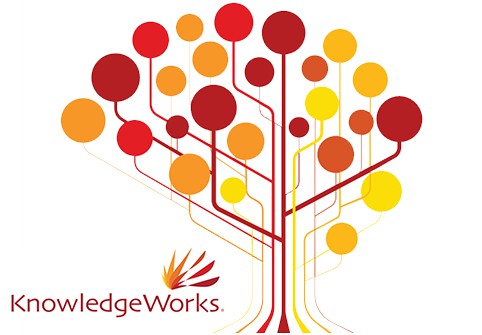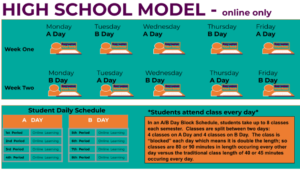Moving Beyond Pilot Phase: District Conditions for Scaling Personalized Learning

Matt Williams
Over the past few years there have been numerous blog posts, reports, and briefs released that focus on the elements of an innovative school from a programmatic and a policy standpoint. These have helped to shape what practitioners and policymakers expect to see in innovative, student-centered, or personalized learning environments.
Personalized learning, broadly speaking, is stuck in the school pilot phase. There are countless examples of personalized learning environments, models, and schools from coast to coast. We have all seen that great school or model and the world of possibilities it offers for the students that attend the school. But how are the other students in that district being educated? How do we reach a level of scale for personalized learning? How do we move from the isolated examples to whole systems designed around providing personalized learning options for all students? How do we build a school system, a learning system, with personalized learning at the core?
One important step in this work is to identify the conditions of scale that exist at a district level.
KnowledgeWorks recently released District Conditions for Scale: A Practical Guide to Scaling Personalized Learning. The report focuses on the conditions that a K-12 school district should put in place to support the scaling of personalized learning. The conditions that we put forth and examine are based on KnowledgeWorks’ secondary research into this area as well as extensive primary research. We conducted interviews of district superintendents and district leadership teams from across the country that were leading system level change around personalized learning.
Why focus on scaling personalized learning at the district level? The reasons are twofold. First, in the United States, the district level is the level of implementation. The district level is closest to the schools and thus the students as well as to the educators. Moreover, the district level has the most control over system vision, curriculum, and instruction, as well as formative assessment and student supports. Secondly, by solving for scale at the district level we gain a clearer vision for what supportive, enabling, and catalytic policy can look like at both the state and federal level. This begins to solve for a better aligned, more supportive education system that is oriented towards putting the student at the center of the system through a vision and focus on personalized learning.
The conditions themselves aren’t rocket science or unfamiliar ranging from curriculum to instruction, professional development to leadership development, from student supports to data systems, from learning environments to partnerships. What gives the conditions their power is a predisposed drive towards personalized learning as well as cross cutting meta-themes. As we interviewed district leaders, several meta-themes emerged as the interviewees discussed their experiences. These themes serve as the connective tissue of the conditions and are the reason that a district must implement each of the ten conditions in order to successfully scale practices to improve teaching, learning, and student achievement.
Vision
Included in all comments from district leaders, directly or indirectly, was the idea of an aligned vision. All parts of a district should be aligned to the vision, including professional development, the selection of curriculum and instructional practices, and the process of innovation. While it was assumed that the vision would include student achievement, district leaders focused on the general idea of having a vision rather than the specifics of their districts’ visions.
Culture
The shared vision of a district clearly informs the system culture that a district will establish. For many of the district leaders, a key element of culture is expectations around innovation. Many of the districts including Reynoldsburg (OH) and Douglas County (CO) were forced to make changes with no additional, or in some cases decreased, resources and money. As a result, innovative thinking is an expectation at all levels, including in partnerships, and especially encouraged at the school level. District leaders emphasized the importance of continuous improvement and fixing problems immediately.
Transparency
Resulting from the notion that members of the education community must feel safe to make mistakes, transparency was another overarching theme of interviews with district leaders. Districts need to be transparent to the board, unions, parents, partners, and the public.
The District Conditions for Scale were constructed upon the hard won lessons of district level trailblazers from across the country. These district leaders piloted, assessed, recalibrated, and scaled without an instruction manual. Often, the district leaders would admit to mistakes or the fact they were “building the plane while they were flying” leading to “Lego-like” policy making. Where each brick was assembled without a fully articulated path to implementation, let alone sustained scale.
It is our hope that these conditions begin to help districts from across the country to implement a more aligned, supportive education system that is oriented towards putting the student at the center of the system through an expressed focus on personalized learning. A systemic focus on personalized teaching and learning demands a coordinating move from pilot phase to true scale. To truly get to a focused, sustained scale we need better alignment between school and district, district and state policy, and state policy and federal policy; only then will we fully unlock the potential of our education system.
For more on personalized learning, check out:
- Rand Study Says Personalized Learning Boosts Academic Gains
- If Online Courses Support Personalized Learning, Then Why Aren’t We Using Them?
- What Personalized Learning Means in My Family

Matt Williams serves as the Vice President of Policy and Advocacy for KnowledgeWorks. Follow Matt on Twitter with @mattawilliams.



0 Comments
Leave a Comment
Your email address will not be published. All fields are required.